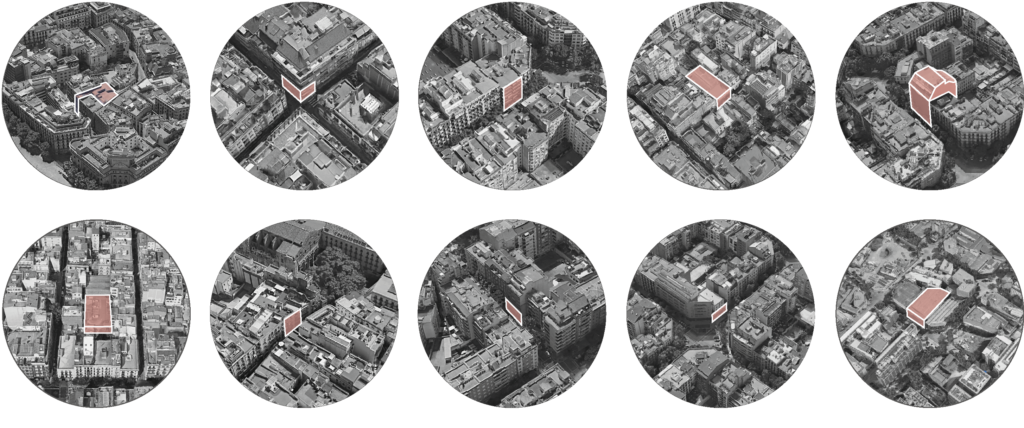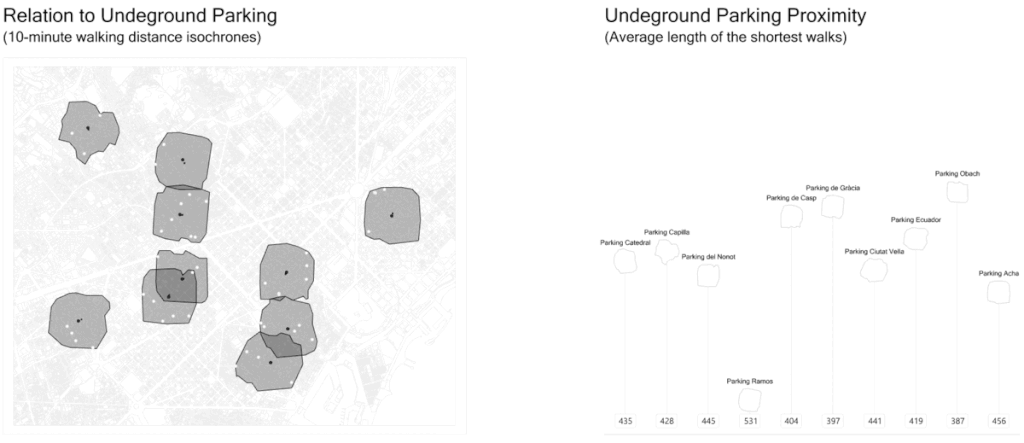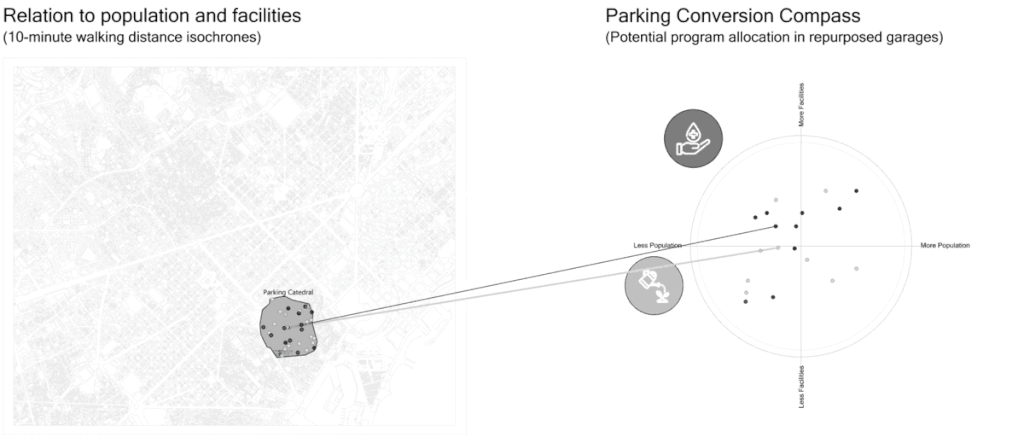INTRODUCTION
This project aims to set up criteria and develop indicators for potential reprogramming of multistory car parks in Barcelona. The study includes proximity evaluation within the parking network as well as analysis and mapping of certain age groups of population and facilities dedicated to serving them. The resulting set of indicators is then plotted on an interactive diagram and used as a program typology selection tool for repurposed car parks.
CONTEXT
The study on car park conversion potential is performed as a chapter of a broader narrative of the ‘From Car Parks to Cultural Parks‘ project of Internet of Cities studio. The computational analysis tools are employed in order to further investigate the trend of re-purposing the infrastructure serving private cars in Barcelona. The scope of the research is narrowed towards 10 case study areas and their particular relation to distribution of facilities serving children and senior citizens, as well as the demographics of the aforementioned – the population groups widely excluded from the car centered urban environments.

case study areas
METHODOLOGY
- A collection of 10 car parks of approximately even floor area and architectural qualities is identified throughout several distinct neighborhoods of Barcelona. The catchment areas of 10-minute walking distances from each building are set as the subject for further analysis.
- The underground garages are mapped within each of the catchment areas and the shortest walk analysis is performed in order to identify the proximity relation. Each case study car park has several alternatives around and the results of this exercise once again reinforces the notion of conversion viability of the multistory parking typology.
- The development of the tool for selection of potential conversion programs is the core aim of the project. The main indicator is set at the intersection of 2 domains: the first one (x axis) defined by the amount of population living in the area, while the second one (y axis) is responsible for the quantity of facilities. The same calculation is performed separately with the data on the children and senior populations. The resulting indicators for both age groups are plotted on the compass. The diameter of the compass is divided into 12 sectors each representing a potential conversion program. The proximity point on the compass perimeter is pulled according to the proximity to the plotted indicators, therefore highlighting the icon responsible for a particular program preassigned for the respective domain of values.
EXERCISE 1

The first chapter of the study investigates the proximity relation of the underground garages to each of the 10 multistory car parks within their catchment areas.
EXERCISE 2

compass plot pseudocode
Parking Conversion Compass is developed as interactive visualization of the potential program selection for each of the case studies. The catchment area of each of the multistory parking lots is highlighted simultaneously with the markings on the compass that indicate suitable conversion scenario depicted on the icons.

CONCLUSION
The Car Parks Conversion Potentials presents an outlook for multi-story parking re-purposing projects in Barcelona. Each of the case study areas may become a site for social infrastructure interventions, based on the research on the demographics and facilities serving populations excluded from car-centric urban development.
References
1 – Open Data BCN – Ajuntament de Barcelona’s open data service. (2021). Retrieved 24 November 2021, from:
https ://opendata-ajuntament.barcelona.cat/en
2 – Gencat – Information, procedures and services of the Government of Catalonia – Census Section. (2021). Retrieved 24 November 2021,
from : https ://www.icgc.cat/es/Administracion-y-empresa/Descargas/Capas-de-geoinformacion/Secciones-censales
Car Parks Conversion Potentials is a project of IAAC, Institute for Advanced Architecture of Catalonia developed Master in City and Technology in 2021/2022
Students: Robert Yussef
Faculty: Eugenio Bettucchi and Iacopo Neri